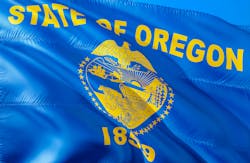Oregon Adopts 2021 Uniform Plumbing Code and 2017 WE•Stand
ONTARIO, CA — Oregon is the first state to adopt IAPMO’s 2021 Uniform Plumbing Code, employing it as the basis for the recently enacted 2021 Oregon Plumbing Specialty Code (OPSC).
The State Plumbing Board went even further to protect its water resources by adopting the 2017 edition of IAPMO’s Water Efficiency and Sanitation Standard (WE•Stand) in its 2021 Oregon Residential Reach Code.
Andy Skinner, chief plumbing inspector for the Oregon Building Codes Division, said the 2021 UPC was chosen in order to promote the state’s unique and diverse economy, which ranges from timber to farming to technology. The 2021 OPSC went into effect April 1, following a process that included delays and logistical difficulties due to the COVID-19 pandemic.
“Oregon’s adoption process is transparent and provides the industry with several opportunities for input,” he said. “This adoption cycle had many challenges and was not an easy lift, but with the help of the industry, IAPMO and a lot of hard work, Oregon was successful in adopting the 2021 OPSC. This new code provides flexibility, fiscal savings, and sustainability for all Oregonians.”
The OPSC includes Appendix M, Peak Water Demand Calculator, and allows for local jurisdictions to adopt Appendix N, Impact of Water Temperature on the Potential for Scalding and Legionella Growth.
Thanks to the adoption of the most current edition of the UPC, Oregonians and industry professionals can utilize the most up-to-date technologies, methods, and materials for effective and efficient plumbing systems. Specifically, the added use of Appendix M will allow for professionals plumbing homes and buildings to update the ways piping systems are sized, which will improve overall water quality, reduce energy usage, and reduce waterborne health risks for the public.
IAPMO’s Peak Water Demand Calculator (WDC) determines pipe sizes based on flow rates and probabilities of water use, depicting a more realistic need for the plumbing systems. The WDC helps reduce material costs by 10-15% and improves sustainability as water travels more efficiently through the systems—delivering hot water faster to the user and resulting in less water waste—and improves water quality by preventing water stagnation, thus mitigating the risk of harmful pathogens and contaminants spreading in the system.
The state also adopted the 2021 Oregon Residential Reach Code, which included the 2017 WE•Stand and “shall apply [portions of WE•Stand] where applicable to the building or dwelling unit.” This tool for residential water usage will allow for Oregon residents to utilize water-saving provisions such as onsite graywater reuse, more efficient landscape irrigation systems, and safe use of composting toilets, all of which will reduce strain on drinking water resources and promote energy efficiency. Depending on the water-consuming plumbing fixtures, appliances and water reuse systems used, water savings of 50% or more are achievable over baseline plumbing code provisions.
“I have been working on changes to building codes, policy and regulations for equitable and sustainable water, water reuse, nutrient recovery and food systems for the better part of my career,” said Pat Lando, executive director of Recode Oregon. “Working with IAPMO WE•Stand’s collaborative environment has brought the best of the industry, trades, technical experts and regulators together to create a standard that serves as a pathway for the future. I am honored to be a part of this body of work.”
IAPMO Field Services Manager Jed Scheuermann said in becoming the first state to adopt the 2021 UPC, Oregon showed the value and importance it places upon water.
“Oregon leads the nation, recognizing that protection of public health, coupled with cutting-edge technology and sustainability, are harmonious goals,” he said. “These outcomes are now realized in Oregon with the adoption of the 2021 Oregon Plumbing Specialty Code, based upon the 2021 Uniform Plumbing Code.”
